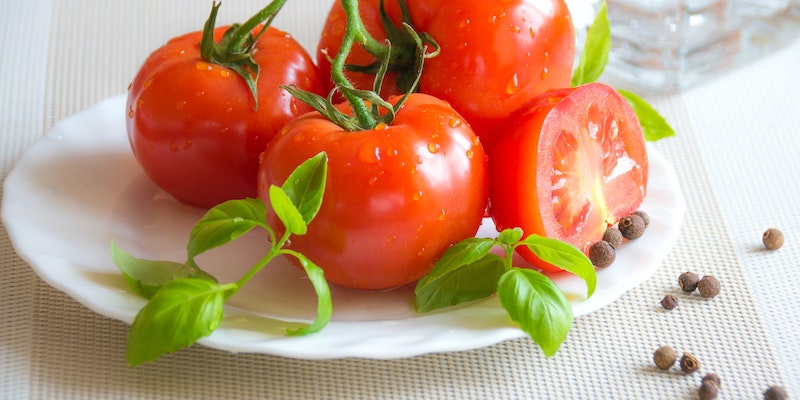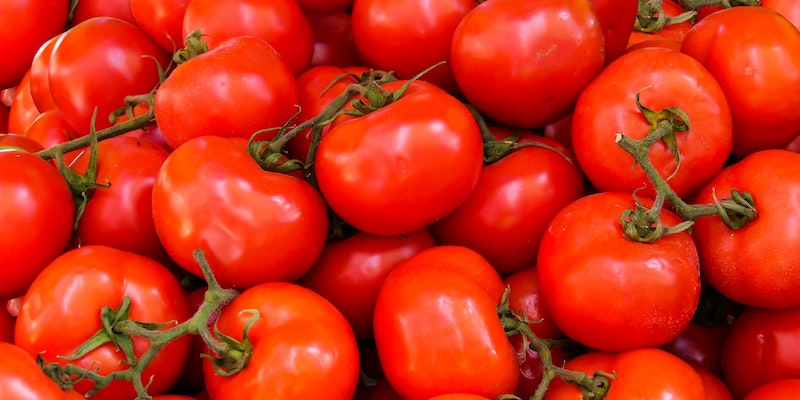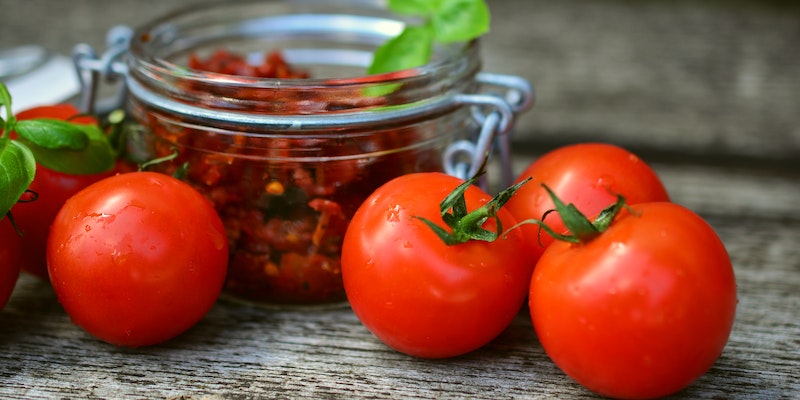Uncovering the Tomato Truth Is California Really a Red Tomato State
Sep 26, 2023 By Triston Martin
Are you curious to know if California truly lives up to its reputation as a red-tomato state? You've come to the right place! In this article, we will uncover the truth behind California's tomato industry and explore whether it deserves its title.

The Farming Landscape of California
California is renowned for its agricultural prowess, and tomatoes are a significant part of its farming landscape. Many people believe that California dominates the market when it comes to red tomatoes, but is this claim supported by facts?
To understand California's position in the tomato industry, it's essential to consider the state's climate and soil conditions. California benefits from a Mediterranean climate with long, sunny days and mild temperatures. These conditions create an ideal environment for growing tomatoes. Additionally, the rich and fertile soil in certain regions of California further enhances tomato cultivation.
However, it's crucial to note that California is not the sole producer of red tomatoes in the United States. Other states like Florida and Texas, and even greenhouse operations in colder regions contribute significantly to the tomato market. These alternative sources provide tomatoes to consumers all year, complementing California's seasonal production.
Another aspect to consider is the variety of tomatoes produced in California. While the state does cultivate a significant number of red tomatoes, it also grows various other types, such as heirloom, cherry, and yellow tomatoes. California's diverse tomato offerings cater to different taste preferences and culinary needs, expanding their presence beyond just red tomatoes.
Large-Scale Production of Tomatoes

In terms of quantity, California does have a substantial tomato output. The state's large-scale production and extensive distribution networks allow for mass shipments to domestic and international markets. This high volume might have contributed to California's reputation as a red-tomato state.
However, it's important not to overlook the impact of imports. Yes, California produces a significant number of tomatoes, but the demand is also met by imports from other countries. The availability of tomatoes from different sources ensures a steady supply throughout the year.
International Imports and Tomato Demand
So, when all is said and done, is California really a red-tomato state? While California plays a significant role in the tomato industry, it is not the exclusive source of red tomatoes in the United States. Other states and even international imports contribute to meeting the demand for tomatoes. California's diverse tomato offerings and high production volume further enhance its presence in the market.
Next time you enjoy a delicious red tomato, remember that it might have come from California, but it might also have been grown elsewhere. Appreciate the collective efforts of farmers across different regions that bring tasty tomatoes to your table year-round.
How Many Tomatoes are Consumed in the US Each Year?

Tomatoes are a staple in American cuisine, finding their way into salads, sandwiches, pasta dishes, sauces, and countless other recipes. But has the average American ever wondered just how many tomatoes Americans consume each year? While the exact figure can vary from year to year, historical data can provide a rough estimate.
As of the last knowledge update in September 2023, the United States was consuming approximately 23 pounds of fresh tomatoes per person per year. This includes both raw and cooked tomatoes, as well as tomatoes used in various processed products like ketchup, tomato sauce, and canned tomatoes.
To put this into perspective, consider that the average medium-sized tomato weighs about 6-8 ounces or roughly 0.375-0.5 pounds. If one takes the lower end of the consumption range (20 pounds per person per year) and assumes an average tomato weight of 0.375 pounds, it can be estimated that a typical American consumes approximately 53 tomatoes each year (20 pounds / 0.375 pounds per tomato).
Why Does California Have So Many Tomatoes?
California stands as a tomato powerhouse for several compelling reasons:
1. Ideal Climate
The Golden State boasts a Mediterranean climate, featuring long, warm summers and mild winters. This ideal weather provides the perfect environment for tomatoes to thrive. These red gems need loads of sunlight and warmth to grow and ripen, which California generously provides.
2. Geographic Diversity
California's varied geography creates microclimates, enabling year-round tomato cultivation. Different regions in the state can produce tomatoes at various times of the year. This diversity ensures a steady supply of tomatoes for the market.
3. Robust Irrigation
California has invested heavily in irrigation infrastructure, including aqueducts and reservoirs. This ensures a consistent water supply to tomato farms, even in areas with limited natural water sources.
4. Agricultural Know-How
The state boasts a rich history of agricultural innovation and research. California's farmers have access to cutting-edge farming techniques, technology, and research institutions. This knowledge empowers them to maximize tomato yields and quality.
5. Scale Advantage
California's vast agricultural operations benefit from economies of scale. Large-scale commercial farms can produce tomatoes in massive quantities, cementing the state's position as a top tomato producer.
6. Efficient Transport
California's well-developed transportation and distribution networks ensure the swift movement of fresh tomatoes from farms to consumers. This accessibility allows California to supply tomatoes not only to domestic markets but also to international destinations.
7. High Demand
Tomatoes are in high demand both in the United States and globally. This demand makes it economically viable for California farmers to prioritize tomato cultivation.
8. Processing Prowess
California doesn't just grow fresh tomatoes; it also plays a crucial role in tomato processing. Many of the tomatoes cultivated in the state are transformed into products like tomato sauce, ketchup, canned tomatoes, and tomato paste. This adds another layer of significance to California's tomato industry.
Conclusion
In conclusion, California's reputation as a red-tomato state is not entirely accurate. While the state excels in tomato production, it does not hold a monopoly on red tomatoes. So, the next time you encounter the claim that California is the sole source of red tomatoes, you can confidently uncover the truth and share your newfound knowledge.








